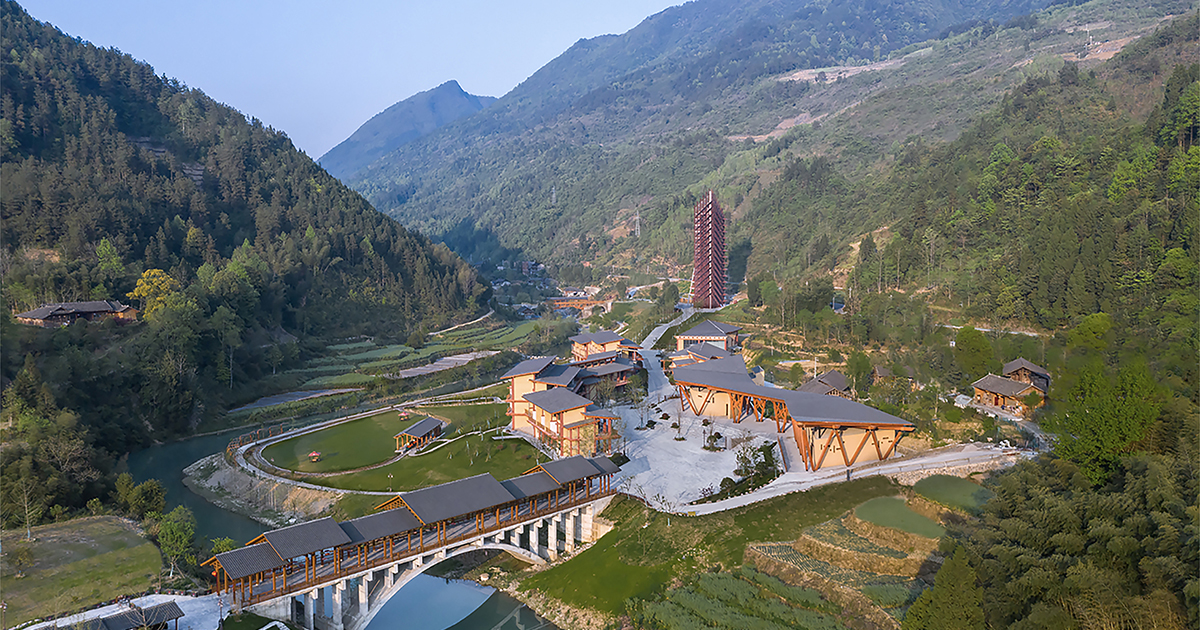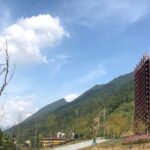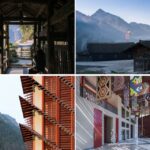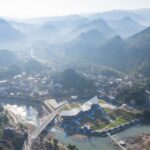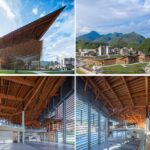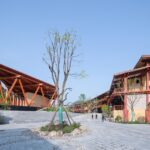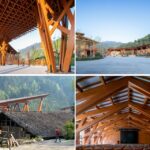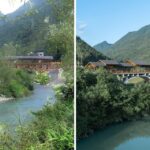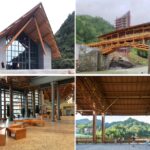Chinese Tujia Pan-Museum Complex | Professor Li Baofeng’s studio | World Design Awards 2022
Professor Li Baofeng’s studio: Runner-Up of World Design Awards 2022. Xuanen County, Tujia Autonomous Region, Hubei Province, China is hidden in the deep mountains. Due to inconvenient transportation, many excellent traditional buildings and traditional production methods have been preserved. In order to promote Tujia culture and improve the poverty of local villagers, the local government and villagers jointly developed Chinese Tujia Pan-Museum. The new parts of this project include the main tourist center, secondary tourist center, Moxiaolou, Moke Bridge, Dixian Bridge, Tujia Culture Exhibition Center, research dormitories and classrooms, etc., with a total construction area of about 30,000 square meters.
The planning and landscape design respects the original topography and minimizes disturbance to nature. In addition to designing the main building with changing ground elevations, it also designs a landscape that retreats layer by layer and conforms to the terrain.
The materials of the building are the same as the local traditional buildings. The architect pays homage to the local cultural traditions of ethnic minorities. However, Chinese Tujia Pan-Museum adopts a contemporary style to show the sense of the times and create a tension of time and space. At the same time, a large number of passive technologies are used in the building to reduce energy consumption during operation. The architectural design uses growing wood as the main material of the building, and factory-made glulam is used for on-site assembly and construction, which helps to achieve the goal of low carbon and environmental protection. Wood acts both as a structure and as an interface, saving expensive interior renovations and reducing the chance of indoor pollution.
In addition, the architect team used digital technology to solve the contradiction of “fabrication requires standardization but uniqueness requires customization”. Due to the complex architectural form, the construction unit encountered many difficulties in material processing and assembly, and traditional experience was not enough to solve these problems. Our design team and robot team cooperate across borders and use robots to process components, which greatly improves efficiency.
After the completion of the Chinese Tujia Pan-Museum, it has attracted a large number of tourists, and the arrival of tourists has played a positive role in the development of the local economy. At the same time, most of the staff in the pan-museum are local villagers, so the project also provides employment opportunities for local villagers. In addition, the external environment of the building is also a public space favored by local residents. Every morning and evening, a large number of local residents gather here to walk and exercise, making the building and its environment full of vitality.

Project Details
Firm
Professor Li Baofeng’s studio
Architect/Designer
Baofeng Li
Project Name
Chinese Tujia Pan-Museum Complex
World Design Awards Category
Mixed-Use Built
Project Location
Enshi Tujia and Miao Autonomous Prefecture, Hubei
Project Team
Baofeng Li, Xuejing Zhu, Qingyuan Yang, Shun Wan, Han Yuan, Pengpeng Yang, Xinqi Wang, Zhiyu Yang, Fawen Zhu, Ruifang Zhang, Ye Cao, Ziling Wang, Zirui Pang, Rui Zhao, Shiwei Zhang, Zhiguang Yu, Tong Wang, Jing Huang, Tao Jiang , Chuanyin Yin, Ben Zhang , Chonghuai Yao
Country
China
Photography ©Credit
©Yilong Zhao
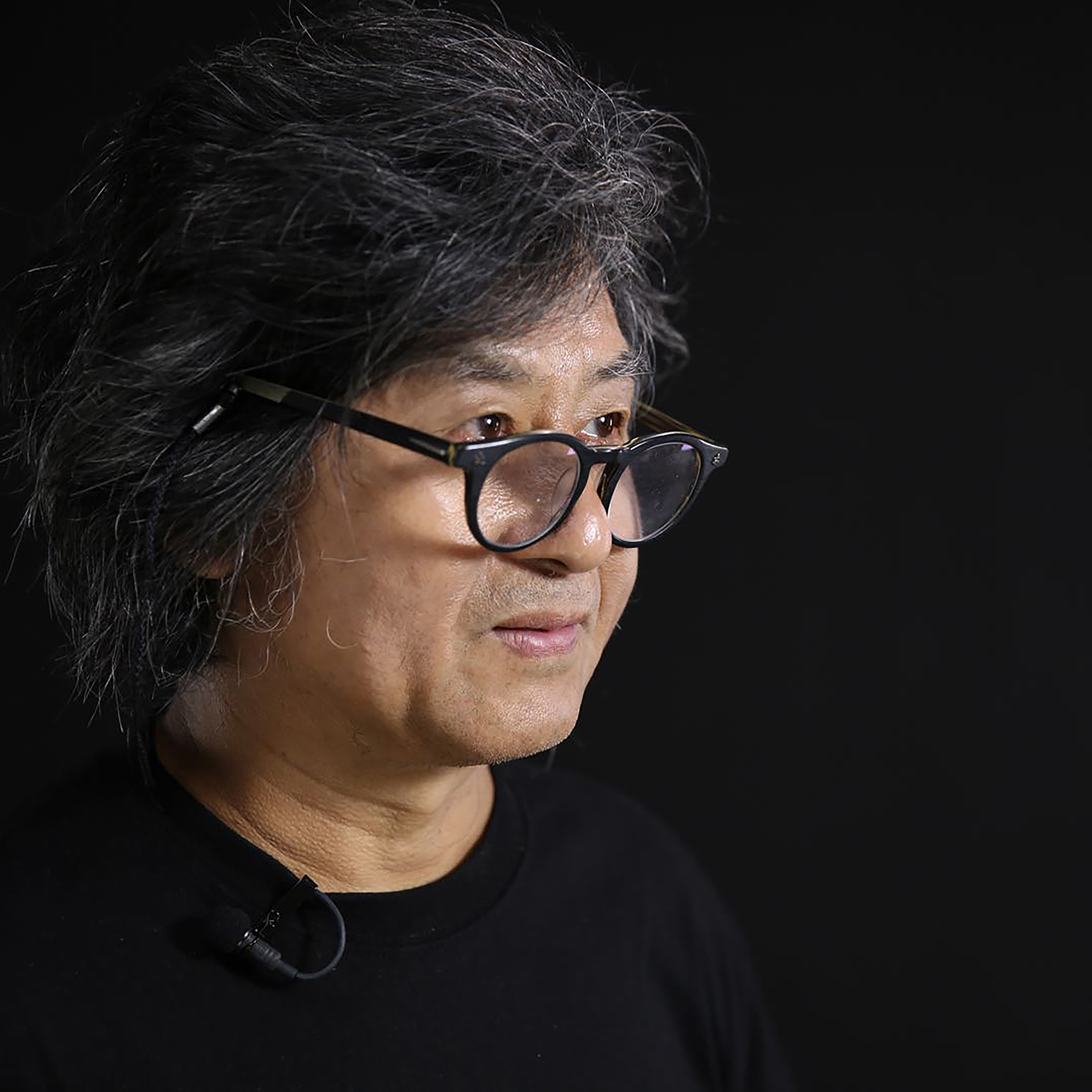 Professor Li Baofeng’s studio
Professor Li Baofeng’s studio
Over the years, Professor Li Baofeng’s studio has adhered to the road of research-based design and adopted the mode of integrating architecture, city and landscape. Teachers Li Baofeng, Ding Jianmin and Xu Changshun control the planning and design from the perspectives of architecture, city and landscape respectively, so as to integrate urban design, architectural design and landscape design. The main research directions are architecture under complex terrain environment, landscape integrated design, green building, ecological landscape, the relationship between climate and urban form, and the architectural design of small and medium-sized museums.



